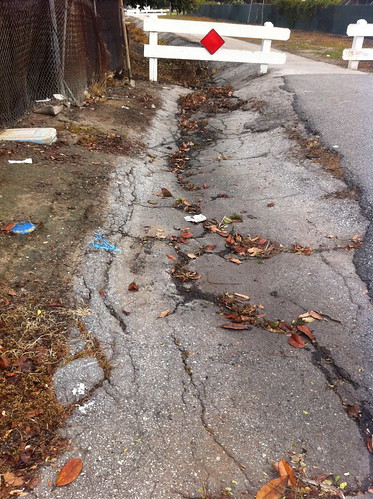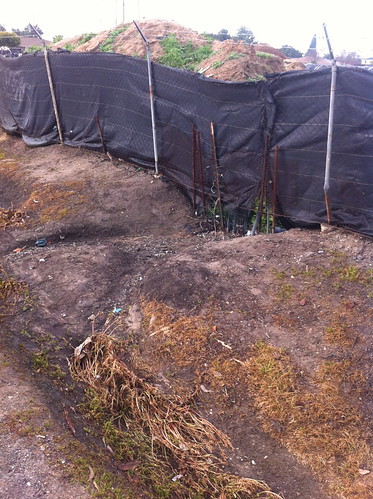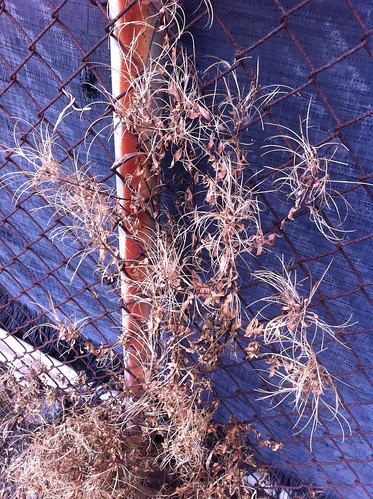I have a love-hate relationship with California, but my feelings about Torrance have always been more straightforward - there are some people there who are incredibly important to me, but Torrance itself I have always hated.
There isn't much gained in hating a place though, especially one I will end up visiting again, so during this visit I decided to "get curious", as one person has advised me; to try to understand WHY Torrance is how it is, how its past influences it, what wild plants and free water are hiding in the cracks and forgotten places of the present, and what is possible in the future. During my latest trip I found several interesting things, which I'll be writing about in a mini-series of blog posts called "In The Darkest Places"
I've always struggled a bit with the concept of 'home'. When I was growing up, my house and immediate surroundings were 'home', but the city around me was not. Yet, to others close to me, Torrance was and is truly home, the only place they would ever want to live. It's taken me years to realize that they don't all secretly hate it and need to be 'rescued'. They instead are looking for something different than I am. Vermont is not for everyone either - it is very dark and can be brutally cold (or not cold enough to be fun) in winter, is muddy and messy in spring, the summers are buggy, humid, and sometimes very rainy, and 'stick season' in late fall is a trying time for everyone except deer hunters. The state is also predominantly rural, and those who want to live in a city (or suburban) environment will not like it here. But for me, it is everything I want, and right now the idea of moving back west seems absurd.
I've always envied the people who found 'home' where they were born; who started out in a place that was right for them and were able to cultivate a life-long relationship with one community and landscape. They strike me as incredibly lucky - like those who marry and happily spend their entire life with their first high school love. Still, there is also strength found in having to search many years for the right place (or person) before you find a good fit. It creates a different sort of connection to the land, but one I feel is no less strong.
The title "In The Darkest Places" comes from the Cloud Cult song "Everybody Here is a Cloud", which contains the lyrics "there's so much more to see in the darkest places". While Torrance is home to some, to me, and also to any plants trying to live on their own in an incredibly controlled and altered environment, it fits the bill: a dark place, but one with much more hiding in the cracks than I realized during the many years I lived there.
During my short week in Torrance, I took some time to explore, peek under things, follow water, and look closely at things I'd never seen before. This included poking around near a dirt-bottom ditch (the one pictured above) that passes under a power line along a road right-of-way in the northern part of the city.
I had noticed this little area on Google Maps, including a little line of green. There had to be SOMETHING living here that wasn't planted, watered, and manicured, right?
What I found was a place of incredible potential, but a dismal present state. The area appears to have been left undeveloped in case Casimir Avenue is ever extended. It makes sense to keep an opening so vehicles can pass through in an emergency, but it does not make sense to leave the area as a weedy field and spray the weeds with pesticides constantly, which is what is happening (and, to my memory, has always happened here). It would be very easy to expand the little swale a bit, plant a few native rain garden plants, and use it to slow down and absorb rainwater entering it from the streets to the south. A tree or two, a few benches... people would probably start picking up their dogs' feces, and a couple of mugwort plants would overpower that smell anyway. There would still be plenty of space for passage by emergency vehicles. Water would be appreciated by people and plants instead of rushing straight into a drain.
A very small 'side channel' enters the ditch from the nursery nearby, and also holds some small potential:
I found one weedy native plant - a willow-herb (Epilobium ciliatum) plant that seems to have been able to produce seed before being sprayed ( see below). Nearby another possible native plant, a Chamaesyce, also clung to life.
As we wandered this little area on a Friday morning, several people passed by, walking, jogging, or walking dogs. This little place has the potential to be a community centerpiece - something Torrance sorely needs - as well as a pleasant place to sit and watch birds flit about in some sedges. Instead, it is dripping with Round-Up (or who knows what else), smells of dog pee, and is unnoticed by the community. The potential is tremendous, but the community seems to lack the will to take initiative with such things (prove me wrong!) and the city doesn't have the money nor the interest to do anything. These are hard economic times, and it shows in the wear, tear, and abandoned yards of my 'home town' (the uncared for yards also may hold a few surprise species, but I lack the heartlessness to poke around still-occupied homes of economically-troubled people for weeds). Still, I know this place is capable of more. Perhaps someday we will get there, but for now, we are left with this dusty little path and aging gutter.
As usual, I uploaded the results of my informal plant survey on iNaturalist. You can see what I found here. I'll have a few more posts about Torrance in the next few weeks.





Great post! I think it would be wonderful to convert that drain into a rainwater swale. I only disagree about "native" plants - I'd say, let Nature plants what she wants. There's no such thing as a weed in this context: If it's green and it grows, it's a plant. Hope someday it happens for Torrance.
ReplyDeleteHi Sutro! While we don't always agree on this subject, I actually am mostly on the same page as you here, though I didn't get a chance to talk about it in this first blog post in this series. Torrance is a place where anything wild, emergent, natural in any sense was systematically, deliberately eliminated and replaced with manicured lawns, grid houses, and such. Anything in Torrance living on its own terms is welcome in my mind (it is said coyotes have found their way there, I have no idea how). I'd rather see something unique and connected to the place (like native plants) rather than the same cheeseweed that is everywhere, I guess, but I was glad to see even cheeseweed at this point. Also if you peruse the photos of plants I popped into iNat you will see that they were all dosed with Round-Up (except one fountain grass that was on the edge of someone's yard). Great.
ReplyDeleteAnyway, in the next week or two I'll also be posting about a brownfield I found in Torrance with a few very hardy plants (native and introduced) hanging on to life on what must be incredibly polluted soil. Nothing invasive there, because life is a struggle for even the toughest plants. What's native to a toxic waste dump? Maybe over time these plants will adapt special tolerance, but I suspect instead they will get bulldozed at some point as even the toxic soils get turned into subdivisions.
Though, with the housing bubble, who knows....
Thanks for your post! If I'm ever out in SF again I'll have to go through Sutro with iNat, but since the app was developed there, there's already a lot of coverage of speceis there, so maybe someone has already done it. If not, you should try it out, it's lots of fun and a godo way to monitor what's in your woods.